Shifting Carpet Glue on Period Tiles with Neat Tile Doctor Remove and Go in Rugby Warwickshire
Earlier this year the owner of an Edwardian 1930’s double bay property in Rugby got in touch regarding an original encaustic cement tiled hallway floor that needed renovation. The floor had been covered in carpet with underlay for many years and this had recently been removed by the owner only to discover this classic floor underneath. Realising it was an original period feature they wanted to have it restored.
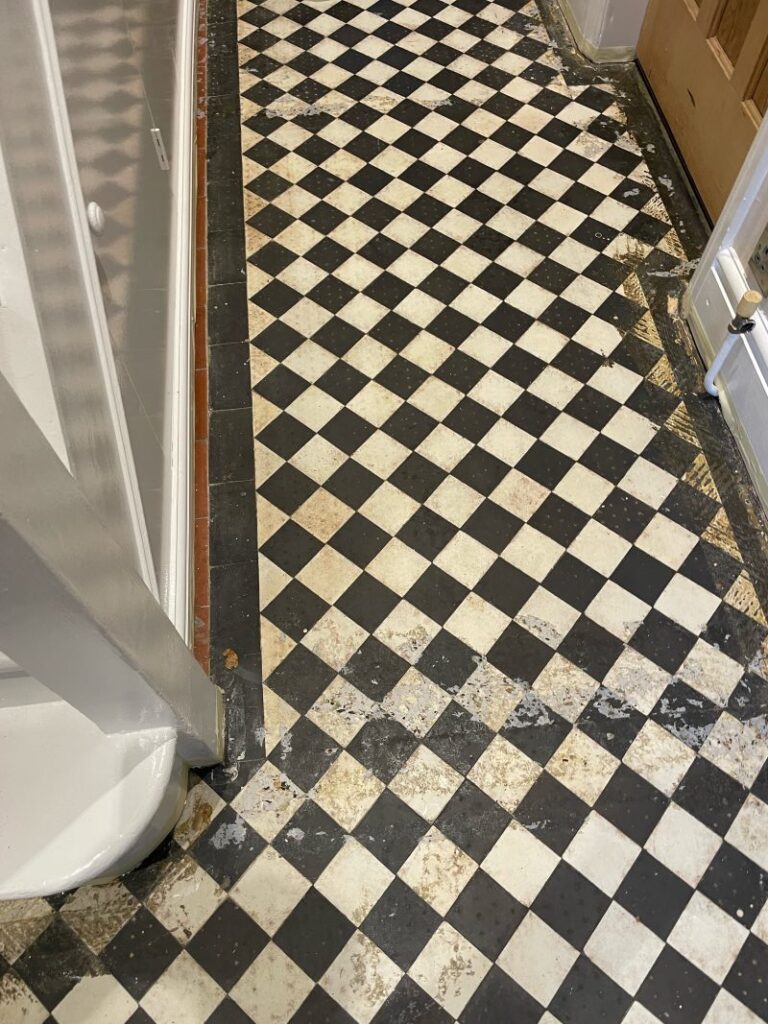
I paid a visit to the property to survey the floor and work out a process for its restoration. It comprised of encaustic tiles (more commonly referred to as Victorian) laid in a diamond pattern throughout the main hallway.
Having inspected the floor I was able to confirm no tile repairs would be needed, and the main issue would be removing the thick layer of glue which was predominantly used around the perimeter of the floor to secure the carpet.
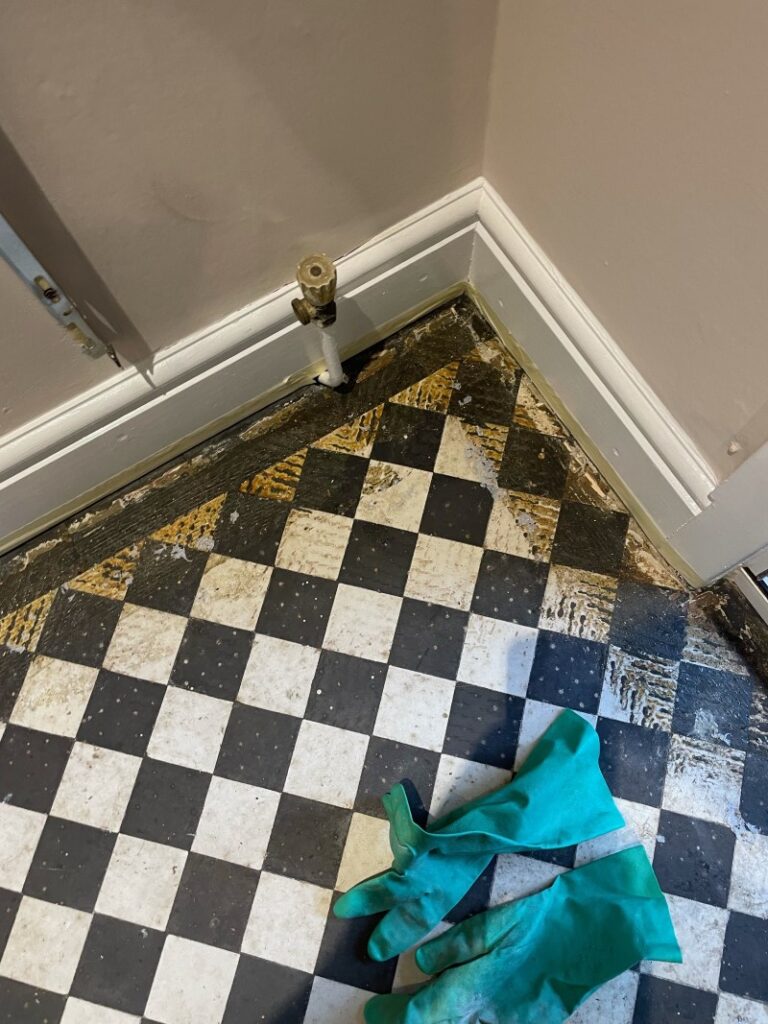 | 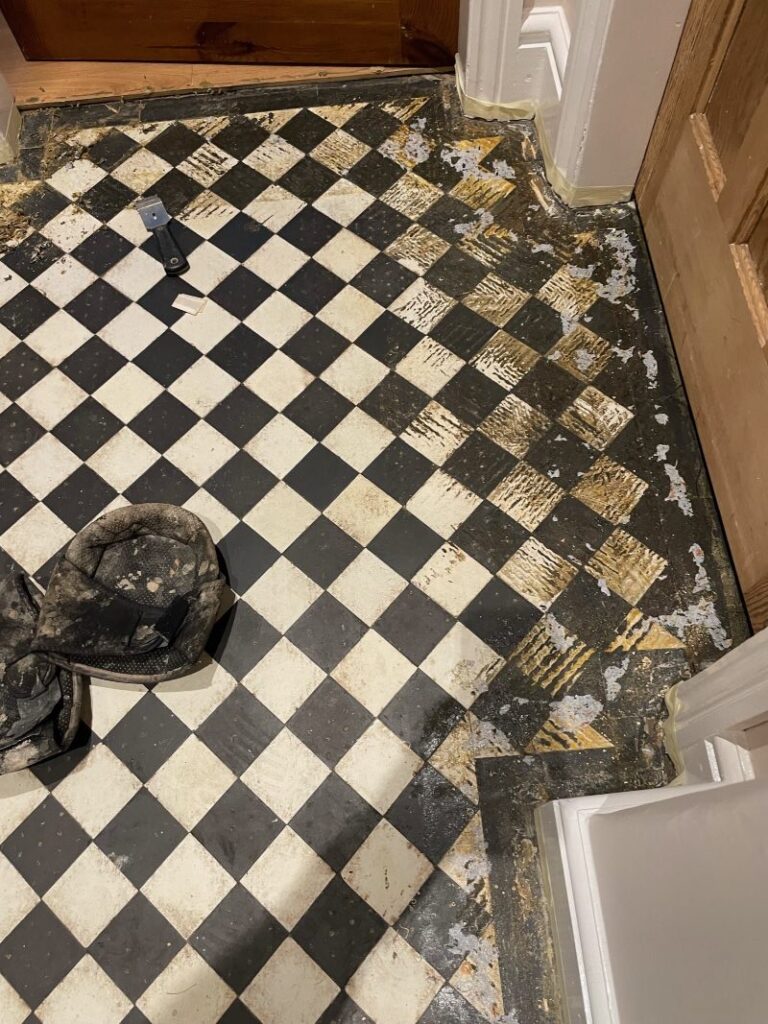 |
Once that had been dealt with, the tiles would need deep cleaning to remove years of dirt and then sealing to add protection going forward. I worked out a quote based on the restoration plan and was confident the work could be completed in a day. Happy with the quote, a date for the work was scheduled.
Cleaning an Edwardian Encaustic Tiled Hallway
The first job was to tackle the glue which involved applying neat Tile Doctor Remove and Go and then leaving it for ten minutes for it to soak in and break down the adhesive. Handheld scrapers where then used to carefully scrape off the glue and then this was followed up with hand-held diamond blocks of different grits to ensure all the adhesive was removed. The soiling was then extracted using a wet vacuum.
The whole floor was then cleaned using an application of Tile Doctor Oxy-Gel, again left to soak in and then scrubbed this time with a buffer machine fitted with a black scrubbing pad.
The soiling was then removed with a wet vacuum and then wiped with cloths to get it as dry as possible. I also deployed a couple of floor fans to further dry the floor.
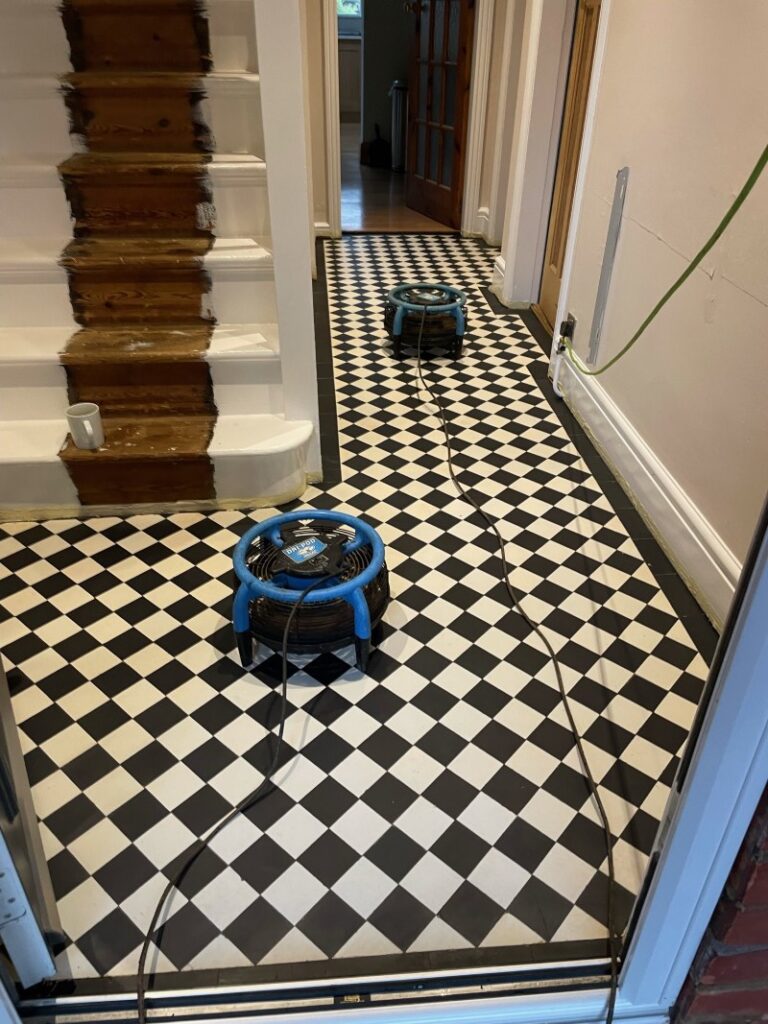
Using a Gel cleaning product minimised the amount of water used to clean the floor and thus result in a reduction in drying times. I also deployed a couple of floor fans to assist with drying which were moved around the floor. It could need to be completely dry before sealing however so it was left for a few hours before being checked for moisture with a damp meter.
Sealing an Edwardian Encaustic Tiled Hallway
To seal the tiles, I applied a couple of coats of Tile Doctor Colour Grow, leaving a good thirty minutes between coats. This sealer is fully breathable and will cope well with any moisture that rises through the tile from the foundation and allow it to evaporate. Old floors like this one were installed before the invention of damp proof membranes and so need to be allowed to breathe.
Tile Doctor Colour Grow is a colour enhancing impregnator which works by occupying the pores in the tile and thereby preventing any dirt from residing there. This keeps dirt on the surface where it can be easily cleaned away.
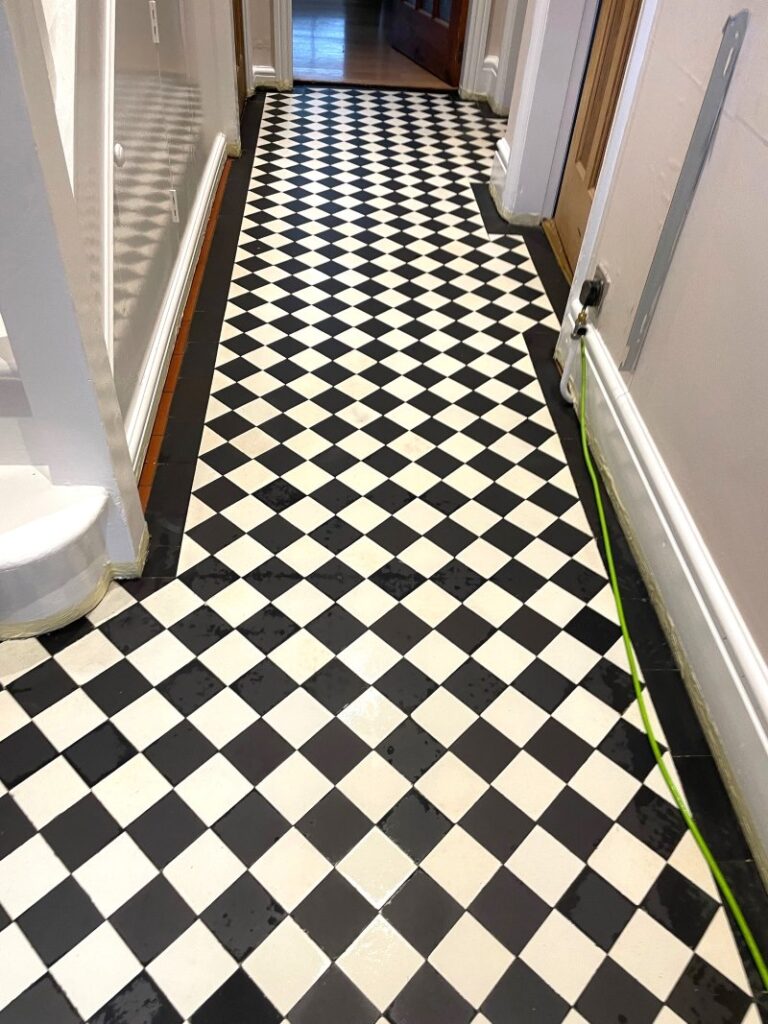
The colour enhancer in the new sealer really made the Black tiles pop and should remain that way as long as the sealer stays in place. Regarding cleaning, I recommended they use Tile Doctor Neutral Tile Cleaner. This product is pH neutral and so won’t impact the sealer which can be the problem with many of the stronger products you find in supermarkets.
My clients were very happy with the renovation, and I popped back a week later to check everything was fine.
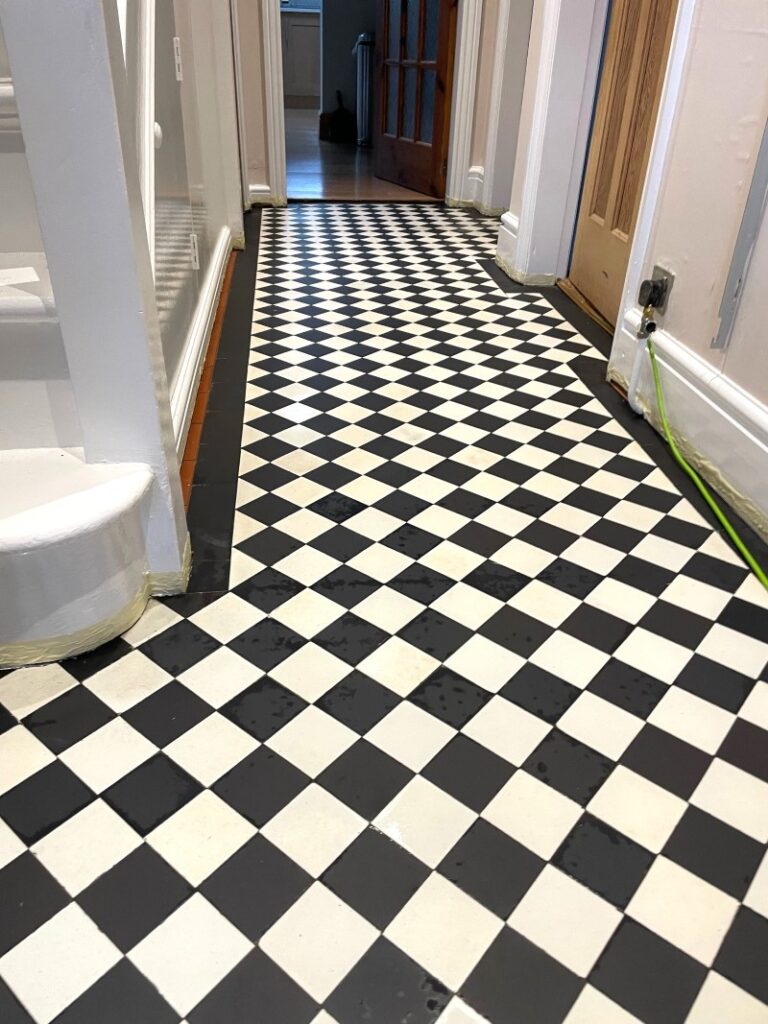
Source: Period Tile Cleaning and Sealing Products and Services in Rugby Lancashire
